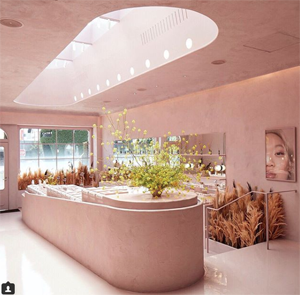Faced with the ever-increasing consumer demand for engaging experiences, the beauty retailing landscape is forced to undergo revolutionary changes. Retailers and beauty brands are adapting to these changes by offering new compelling shopping experiences and utilizing technology online and offline.
The most dramatic beauty sales growth comes from the direct sales channel, up over 13%, which includes e-commerce, social selling brands, and home shopping networks. Specialty stores, which include cosmetics specialty and vertically-integrated brick-and-mortar stores, advance at 9% in 2017 in the United States. These two channels combined account for an estimated almost one-third of total beauty sales. They also include the top four fastest and above-market average growth subchannels, according to Kline’s Beauty Retailing USA: Channel Analysis and Opportunities report.
“Traditional department stores, in a quest to reverse declining sales and attract the
younger generation of experimental consumers, are transitioning to become more competitive with e-commerce by employing more technology,” comments Donna Barson, Senior Consultant at Kline. “However, it is specialty retailers that are at the forefront of the retailing changes, attracting consumers by developing more engaging formats and more personalized customer experience. The retailers on both sides are now adapting. Traditional retailers are utilizing more in-store technologies while once online-only exclusives, such as Glossier and KKW Beauty, are establishing pop-up or permanent brick-and-mortar retail stores, to have a better dialogue with customers.”
Brands that continue to launch their own boutique locations, such as e.l.f., NYX, Aesop, and Rituals are joined by newcomers Deciem, Innisfree, and Natura Brasil. At the same time, Kiko Milano USA files for Chapter 11 bankruptcy in early 2018 and closes all but a few locations in the United States.
Digitally native brands lay out strategies to utilize pop-up shops to create meaningful experiences and learn more about their target consumers, and possibly even test locations for permanent stores, while introducing the brand to a new audience. Glossier has successfully implemented this strategy and opens another permanent location in 2018. Serious about its expansion, Glossier also acquires a tech company, which is another big trend that continues into 2018 where retailers are investing in tech firms.
Most recently, Macy’s made two notable investments that can be used to enhance pop-up themes by creating more experience-based concepts in stores. In May, Macy’s acquires Story, a one-location concept store that reinvents itself with a new theme every four to eight weeks. In June, Macy’s takes a minority stake in a technology company that provides a software platform that the retailer intends to use to expand “The Market @ Macy’s”, launched in 2018 as a pop-up marketplace that showcases a rotating selection of products across categories.
Nordstrom also makes two technology acquisitions in March 2018. BevyUp allows shoppers to share information with each other and browse items together online, while MessageYes offers brands the opportunity to text their customers.
Multibrand cosmetic specialty stores show rapid growth during 2017 due to the continuing opening of new locations by Ulta and Bluemercury, with new formats such as The Sephora Studio which focuses on a curated assortment along with services, and with Forever 21’s Riley Rose, which concentrates on millennial-skewed brands that are hard to find in physical stores.

